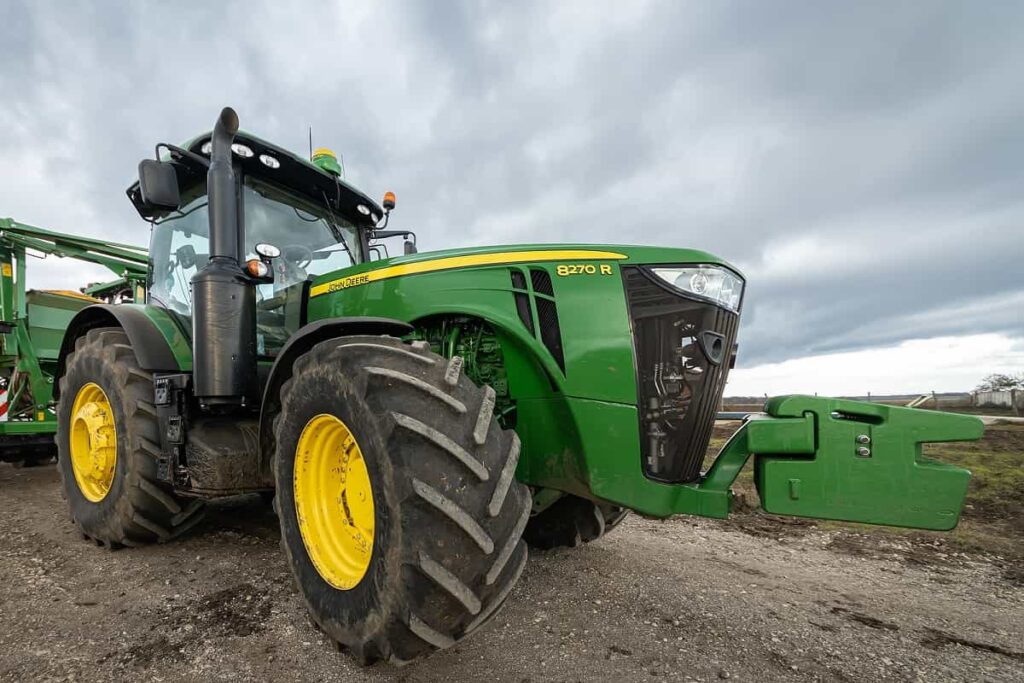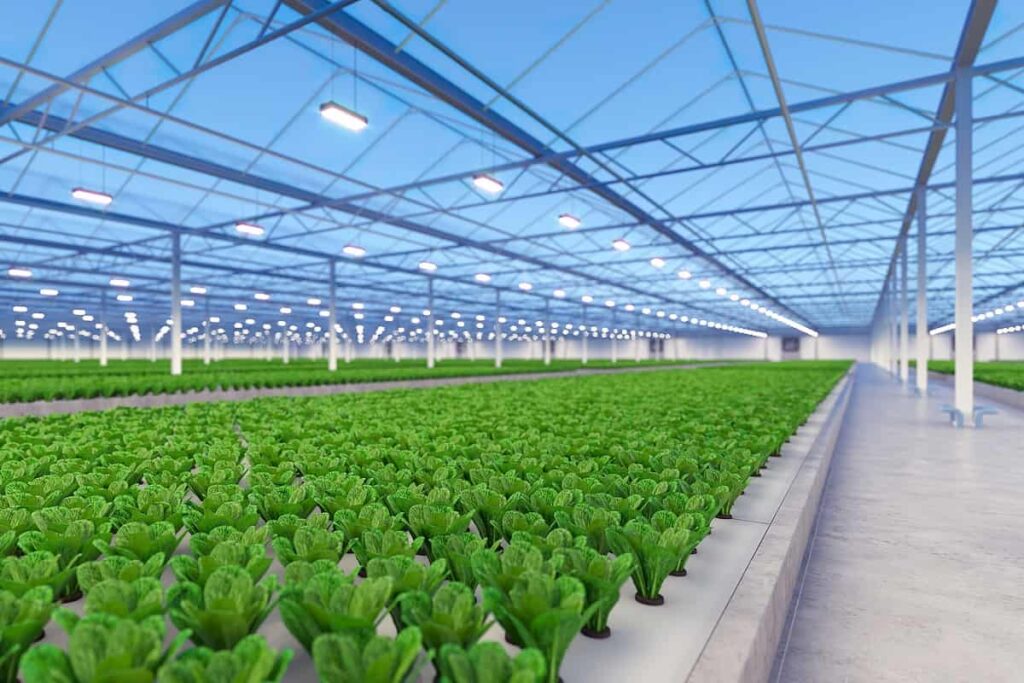The Economics of Container Farming in Nauru
Table of contents

People from countries we refer to as frontier markets must roll their eyes when some people in America talk about how “oppressed” they are. The same people complaining about how bad it is in the States probably think Africa is a country when in fact it’s 54 countries. A lot of Africans actually are oppressed because about half of the continent’s countries are run by dictators. If you can go into your local store and buy some fresh lettuce at any hour of the day, 365 days a year, you’re not oppressed. Most people around the world don’t have access to a large selection of fresh vegetables or the means to purchase them. Take Nauru for instance.
You might be excused for not knowing much about the country of Nauru. It’s a small island in the Pacific Ocean that’s only ten times larger than Microsoft’s campus in Redmond with one-fifth the people. The ~11,000 citizens of Nauru occupy a footprint of about 8.1 square miles (21.98 sq. kilometers) out in the middle of absolutely nowhere. The surrounding waters are so deep they never have to worry about tsunamis. About once a month, a ship will cruise into the harbor dropping off loads of food and supplies. Vegetables are all flown in by air. With its pleasant island breezes, Nauru is a hidden gem that happens to be the least visited place in the world. As a result of not having to deal with obnoxious tourists, the citizens are some of the kindest people you’ll ever meet. They’re also the world’s most portly. You would be too if you had to pay these prices for vegetables.

We did the math for you on those numbers. If you want to buy a head of lettuce in Nauru, you can’t. They don’t have any right now. If they did, you would pay $3.29 a pound or $7.25 a kilo in greenbacks. That’s more than three times the retail price of lettuce in the United States which sits at around $1.09 a pound. In order to solve the obesity problem which commonly afflicts island nations like Nauru, we need to make healthy food more affordable. Maybe we can use something Nauru has a whole lot of already – shipping containers.
In a previous article, we wrote about the newly sprouted industry of “vertical farming.” Also called indoor farming, the eleven startups we looked at have collectively raised more than $900 million in venture capital so far. The appeal is in the delicious numbers. Indoor farming uses 95% less water and yields 400 times more output than the same land footprint when compared to traditional farming methods. That’s what it says on the tin, but the experts are skeptical when it comes to indoor farming using shipping containers like the one seen below.

Container Farming Economics
We’re not interested in the “farm to table” marketing spin being put on container farming, we’re solely interested in the economics. For that, we can turn to Peter Tasgal, a man who used to work as an investment banker before he managed to turn his life around and became the CFO of a $100 million consumer packaged goods company. Today, he’s an agriculture consultant, and this past February he penned a piece on “What is the Future of Container Farming?” in which he talks about how it’s largely a niche business applicable to applications like “restaurants, traditional farmers seeking to maintain year-round customers, clean rooms, and areas of extreme climate.” This table pulled from his article compares various methods of farming:

Container farming has the “highest cost per delivered pound” with Mr. Tasgal stating that it’s “at best four times as expensive per pound to grow in a container farm and more likely over 10.0x as expensive as compared to traditional farming methods.” He proposed that either technology can be used to reduce the cost per pound (nothing on the horizon yet) or people can pay a price premium for “better quality produce.” Since the people of Nauru already pay a price premium, this isn’t exactly a showstopper.
Some Initial Concerns
We shipped one of our MBAs over to Nauru to visit with Mathew Batsiua, former Health Minister of Nauru, and someone who has spent the last 4 years of his life fighting his own version of an African dictatorship with the local government. He thinks that container farming might be able to provide the Nauruan people with an alternative to purchasing over-priced greens at the supermarket. Aside from being able to offer cheaper and fresher greens, container farming could be used as part of a school program to get the country’s youth eating healthier. An additional benefit would be creating some local jobs. If the initial implementation works out, Nauru could act as a model for other Pacific Island countries that all have a similar obesity problem for all the same reasons.
Some initial concerns he raised around container farming:
- Support and training
- Durability of the components in the unique climate of Nauru
- Consumption of electricity
- The need for solar integration
- Availability of consumables required to operate the farm
In order to gauge the suitability of container farming for the country of Nauru, we’re turning to “the world’s leading manufacturer of container farming technology,” a startup called Freight Farms.
Freight Farms
Founded in 2013, aptly named startup Freight Farms hails out of Bahstun Massachusetts and has raised $11.4 million in funding so far to develop “high-volume crop production units made from upcycled shipping containers to support farming in any climate.”
Update 02/13/2020: Freight Farms has raised $15 million in Series B funding to continue improving their platform and to provide new services for their growing global network of farmers and corporate partners. This brings the company’s total funding to $26.4 million to date.
Their container farming solution can produce over 500 types of lettuces, herbs, leafy greens, and small root vegetables at a commercial scale. As of January 2019, their hydroponic container farms can be found in 38 U.S. states and 15 countries. Their latest growing platform, The Greenery, costs $104,000.

It’s a significant price increase over their previous container solution, The Leafy Green Machine, which ran just $76,000. That’s because The Greenery has over 70% more growing space than the Leafy Green Machine.
If we’re going to deploy The Greenery on Nauru, we need to get it there first. Let’s say that’s an additional $8,000 in shipping costs. With an initial capital outlay of $112,000, we can begin to crunch some numbers. Firstly, let’s look at the operational requirements:

Nothing too alarming here. Water is clearly in short supply for Nauru but 5 gallons a day is manageable. One gigabyte of data a month is affordable. We need to consider that electricity in this part of the world is more costly as well. Consumables like peat moss plugs, seeds, and nutrient solutions will all need to be imported by ship. Let’s do some back-of-the-napkin math and see how much time it might take to recoup our initial investment.
Container Farming Yields
According to an article by the University of Saskatchewan on hydroponic lettuce, “all it takes to grow one lettuce is 1 g of fertilizer, 1 L water, 1 seed, and 1 Jiffy-7 peat pellet, at a cost of as little as 10 cents per plant.” Now we have an estimated cost per head of lettuce. “With an average plant success rate of 95%, you can plan on harvesting about 940 plants a week,” says Freight Farms. They’re talking about harvesting lettuce at a 4-week maturity and we’re estimating the weight of each lettuce head to be 4 ounces based on an estimate given from Bright Agrotech in their article “How Much Can Container Farms Really Grow?” That gives us 235 pounds of lettuce a week or 12,220 pounds of lettuce a year (just over 6 tons). If we sold that lettuce at $1.64 a pound – about half the price of lettuce on Nauru today – that gives us about $20,040 in revenues a year. For consumables, let’s assume ten cents per plant (48,880 plants = $4,888). For electricity, the company states that power consumption for a Greenery ranges from 150-165 kWh per day. Here’s an idea of electricity rates on Nauru in AUD.

Unless we can convince the government to cut us a break, the math works out to $21,900 a year AUD which is $15,064 a year USD in electricity costs. Subtracting our costs ($15,064 + $4,888) from our revenues ($20,040) we get a meager profit of $88 and we haven’t even considered labor or the cost of support. Barring any serious errors in our assumptions, it doesn’t look like container farming would be very economically viable for the country of Nauru. Even with electricity subsidized at the lowest domestic rate, we’re still looking at 10 years before we can receive a return on our initial capital outlay and that’s without considering the time value of money.
Conclusion
Container farming shouldn’t just be about producing better tasting “farm to table” produce for over-priced restaurants to sell at a premium to well-off diners, it should do something better than that for mankind. Our back of the napkin calculations don’t quite add up. Sure, we might be able to negotiate down the price a bit, or the Government of Nauru might subsidize the operation, but as we’ve said before, subsidizing the world’s problems won’t scale. The operation needs to be self-sustaining, generate a profit, and provide an ROI in a reasonable amount of time. If you think your container farming startup can provide a solution to Nauru’s obesity problem, Mr. Batsiua would like to have a chat with you.
Sign up to our newsletter to get more of our great research delivered straight to your inbox!
Nanalyze Weekly includes useful insights written by our team of underpaid MBAs, research on new disruptive technology stocks flying under the radar, and summaries of our recent research. Always 100% free.















What will it take to make this successful, the migration to urban farming is already underway.
Taking into account improvements in LED efficiency and more efficient freight farming equipment, what does a farmer need to have/do to make the unit economics work in their favor today. Perhaps a certain minimum price/lb, available subsidies etc… would like to hear from people with experience.
Good questions. We attempted to answer some of them earlier this year in the following piece: https://nanalyze.com/2021/06/vertical-farms-profitable/